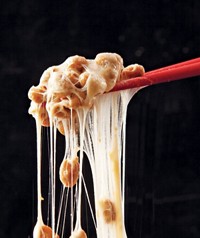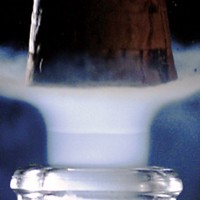Advertisement
Grab your lab coat. Let's get started
Welcome!
Welcome!
Create an account below to get 6 C&EN articles per month, receive newsletters and more - all free.
It seems this is your first time logging in online. Please enter the following information to continue.
As an ACS member you automatically get access to this site. All we need is few more details to create your reading experience.
Not you? Sign in with a different account.
Not you? Sign in with a different account.
ERROR 1
ERROR 1
ERROR 2
ERROR 2
ERROR 2
ERROR 2
ERROR 2
Password and Confirm password must match.
If you have an ACS member number, please enter it here so we can link this account to your membership. (optional)
ERROR 2
ACS values your privacy. By submitting your information, you are gaining access to C&EN and subscribing to our weekly newsletter. We use the information you provide to make your reading experience better, and we will never sell your data to third party members.
Food Science
Newscripts
Chocolate made easy and climate-conscious cows
by Katherine Bourzac
October 3, 2021
| A version of this story appeared in
Volume 99, Issue 36
Chocolate, reengineered

If you go to Alejandro Marangoni’s house for a meal, you might be treated to an experiment. The University of Guelph food scientist went through a phase of feeding his children pancakes made with as much fiber as they could stomach. These days Marangoni might treat a guest to something sweeter: a special chocolate engineered to be easier to make.
Cocoa butter crystals can take six forms, one of which makes for chocolate with the ideal glossiness, snap, and melting behavior. Chocolatiers carefully temper chocolate, melting and cooling it until it looks and feels right. Chocolate becomes glossy and has just the right viscosity when Form V cocoa butter crystals dominate, and other polymorphs have melted away. Commercial chocolate makers monitor the process by temperature. Even with great attention to detail, the process is difficult to control.
The primary components of cocoa butter fat crystals are triglycerides. Marangoni was curious about the role of trace compounds naturally present in cocoa butter. His team added small amounts of minor lipids to melted cocoa butter and grocery store chocolates and watched for their effects on the tempering process. They found that adding just 0.1% by weight of two phospholipids already present in chocolate made the tempering process nearly foolproof, with less need for temperature control (Nat. Commun. 2021, DOI: 10.1038/s41467-021-25206-1).
Marangoni’s team checked their chocolate’s properties in a synchrotron and with mechanical tests, determining its crystal structure and elastic bending modulus, a measure of how stiff it is. The material properties of the easy-to-temper chocolate matched those of the best-quality chocolate. Adding phospholipids could help major chocolate manufacturers ensure good yields, and it could help home cooks be less intimidated to mold and work with chocolate, Marangoni tells Newscripts.
Chocolate also makes it easier to talk to people about materials science without them wanting to run away, he says. A sweet treat helps the nerd talk go down easier.
Potty-trained cows

Treats can also be used to train cattle. After passing a food-driven training regimen, cattle at the Leibniz Institute for Farm Animal Biology in Germany have defied the low mental expectations people put on bovines and have learned to use a latrine.
In a press release, lead researcher Jan Langbein says that cattle are clever. “Why shouldn’t they be able to learn how to use a toilet?” Or as his team deems it, a “MooLoo.”
To be potty trained, an animal must have an awareness that it needs to go and be able to override that need and hold it in. Researchers know that cattle have the necessary neurophysiological controls but hadn’t been able to train them.
Langbein’s team first confined calves to a latrine area and rewarded them with either crushed barley or an electrolyte drink made with molasses and glucose anytime they urinated. Then, they let the calves move more freely and rewarded them with the treat when they went into the latrine to urinate. Animals that urinated outside the latrine were sprayed with water, which cows do not enjoy. The researchers potty trained 10 of the 16 calves using the treat-and-spray method (Curr. Biol. 2021, DOI: 10.1016/j.cub.2021.07.011).
“Remarkably, the calves showed a level of performance comparable to that of children and superior to that of very young children,” the researchers write in the paper describing their results.
The goal of the research is to enlist animals’ mental capabilities to help solve environmental problems. Ammonia that runs off from farm waste contributes to water-quality issues. Soil microbes consume it and convert it into nitrous oxide, a potent greenhouse gas. Capturing about 80% of cattle urine in latrines could lead to a 56% reduction in ammonia emissions. And toilet-trained livestock, the researchers write, could also enjoy cleaner and more hygienic living quarters.
Please send comments and suggestions to newscripts@acs.org.




Join the conversation
Contact the reporter
Submit a Letter to the Editor for publication
Engage with us on Twitter